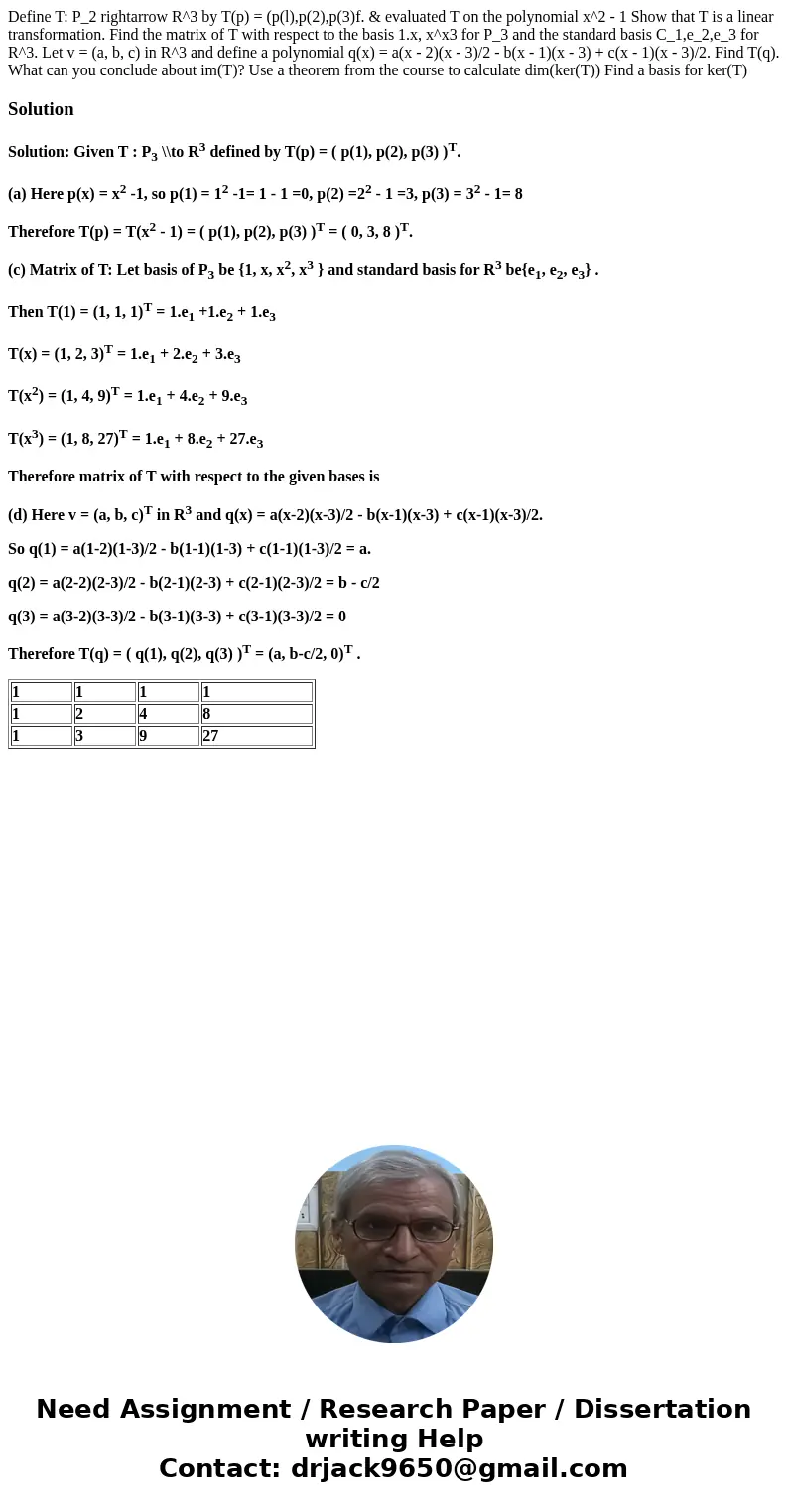Define T P2 rightarrow R3 by Tp plp2p3f evaluated T on the
Solution
Solution: Given T : P3 \\to R3 defined by T(p) = ( p(1), p(2), p(3) )T.
(a) Here p(x) = x2 -1, so p(1) = 12 -1= 1 - 1 =0, p(2) =22 - 1 =3, p(3) = 32 - 1= 8
Therefore T(p) = T(x2 - 1) = ( p(1), p(2), p(3) )T = ( 0, 3, 8 )T.
(c) Matrix of T: Let basis of P3 be {1, x, x2, x3 } and standard basis for R3 be{e1, e2, e3} .
Then T(1) = (1, 1, 1)T = 1.e1 +1.e2 + 1.e3
T(x) = (1, 2, 3)T = 1.e1 + 2.e2 + 3.e3
T(x2) = (1, 4, 9)T = 1.e1 + 4.e2 + 9.e3
T(x3) = (1, 8, 27)T = 1.e1 + 8.e2 + 27.e3
Therefore matrix of T with respect to the given bases is
(d) Here v = (a, b, c)T in R3 and q(x) = a(x-2)(x-3)/2 - b(x-1)(x-3) + c(x-1)(x-3)/2.
So q(1) = a(1-2)(1-3)/2 - b(1-1)(1-3) + c(1-1)(1-3)/2 = a.
q(2) = a(2-2)(2-3)/2 - b(2-1)(2-3) + c(2-1)(2-3)/2 = b - c/2
q(3) = a(3-2)(3-3)/2 - b(3-1)(3-3) + c(3-1)(3-3)/2 = 0
Therefore T(q) = ( q(1), q(2), q(3) )T = (a, b-c/2, 0)T .
| 1 | 1 | 1 | 1 |
| 1 | 2 | 4 | 8 |
| 1 | 3 | 9 | 27 |

 Homework Sourse
Homework Sourse